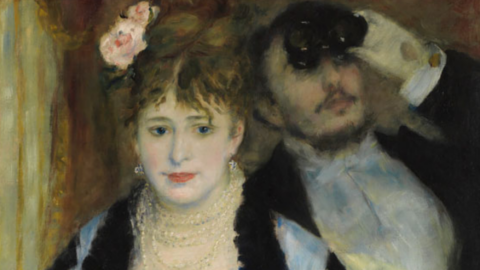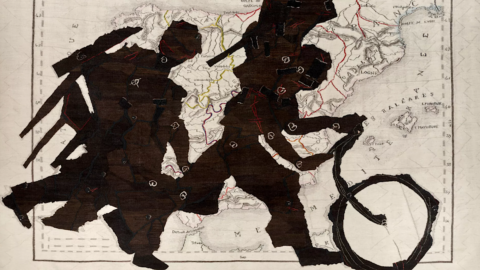The love for jewels and the passion for history come together in the exhibition with which Sotheby's presents the auction dedicated to "Royal Jewels" the royal jewels of the Bourbon Parma family. Something never seen before starting with the pieces pearls and diamonds that belonged to Marie Antoinette, daughter of Maria Theresa of Austria who married Louis XVI at the age of 18 in France and ended up with him on the guillotine in 1793. Terror, blood and precious stones: a diamond pendant supports a pearl of exceptional dimensions (26mm x 18mm). Delicate and refined design, which woman wouldn't want to be able to wear it at least once in her life? It will go to auction in Geneva on November 12, 2018, with a starting estimate of 1-2 million dollars, a strong "piece" in a basket of about a hundred unique jewels that belonged to the Bourbon-Parma family that has intertwined over the years , its destinies with those of the most important families of Europe. From the royalty of France and Spain, to the Empress Eugenia of Austria, to the Dukes of Parma. A selection was previewed in London a few days ago and arrives today, Thursday 21 June, in Rome. The next stops will be Milan on 27 June, Munich on 18 September and Cologne on 21 September. Then again New York and Hong Kong, then the sale in Switzerland.
Diamonds and pearls were much loved by Louis XVI's young wife and the jewelery package that belonged to her stands out an amazing necklace of 119 natural pearls, with a starting base of 200-300 dollars. Certainly it is not the same that inspired Alexandre Dumas and his famous novel "The Queen's Necklace", a storm of diamonds and at the center of court intrigues, but there is no doubt that it still makes you dream. How it takes your breath away parure composed of 95 diamonds (estimated at 300-500 dollars) which adorned the neck of her niece Luisa di Francia. Instead, it belonged to the House of Habsburg cartouche-shaped diamond tiara given by Emperor Franz Joseph (1882-1916) to his niece Maria Anna of Austria. Same Habsburg provenance for one stunning diamond bow brooch, adorned with a 6,89-carat Burmese ruby (estimated at $200-300) or l 'another brooch, in diamonds with a 30,70 carat Ceylon sapphire (150-250 thousand dollars). Finally, they go to school pair of diamond “en girandole” earrings (150-250 thousand dollars) that belonged to Maria Teresa of Savoy (1803-1879) , large brooch with diamond pendant (25-35 thousand dollars) received by Princess Maria Pia of Bourbon on the occasion of her marriage to Robert I, the last duke of Parma and Piacenza.
“At an international level and considering the most important auction houses on a planetary level – he states without false modesty Daniela Mascetti, vice president of Sotheby's jewelery Europe and senior international specialist of the maison – I believe a collection of jewelery of this caliber and provenance can be considered one of the most important ever to hit the market”. The starting estimate is around 5 million dollars but it is a figure, precise, which does not say much about the potential of the auction that Sotheby's expects to multiply by at least six times. If one were to rely on experience, one of the last auctions somewhat comparable in importance – the one that put the collection of Wallis Simpson, born Bessie Wallis Warfield, became Duchess of Windsor and wife of Edward VIII of the United Kingdom who abdicated the throne for her. That time the estimated value of the jewels started from 5 million pounds but reached 30 million at the end of the auction. Another auction to remember is the one for the sale of collection of the princes Thurn and Taxis "but in both cases - Mascetti underlines again - it was a matter of much more localized jewels while in this case we range in time, from the end of the 700th century to the 20s-30s of the last century with a ramification that touched the most important families European royalty". Sotheby's expects a success similar to that of the previous maxi-auctions already mentioned but then we need to see concretely how the buyers move. And the European road show will also serve to focus on more precise forecasts.
"In the case of the Duchess of Windsor - recalls Mascetti - the fact that the auction took place a year after her death and that she herself had destined the proceeds of the sale to the Institut Pasteur in Paris, engaged at the time in research for therapies and for the anti-AIDS vaccine. With the "Royal Jewels" we have before us the great story, starting with the small nucleus of jewels that belonged to Marie Antoinette, which she herself packed in wadding and then in a small box to take to Belgium. But the escape from Paris, as we know, failed for the queen who was guillotined together with the king. The jewels instead crossed the border, ended up in Austria and there after years, they returned to the hands of Marie Antoinette's daughter, Madame Royale, who survived the revolution. She then inherited them, her niece Louise of France, Duchess of Parma and granddaughter of Charles X who in turn left them to her son Robert, last Duke of Parma".
Who are the buyers? At the latest Sotheby's auctions was attended by buyers from 50 countries . It's easy to imagine who the top 10 might be, including China, Russia, the United States and the main European countries, including Italy of course.
They will be the ones to contend for the precious jewels. Are they an investment still appreciated by the market where, to remain in a neighboring sector, watch auctions are becoming increasingly successful? “Investment is not the most appropriate word in my opinion – concludes Daniela Mascetti – because it presupposes the will to buy and resell to make a more or less immediate profit. I would certainly say that jewels have always been an effective way to diversify one's portfolio. After investing in industrial activities, in buildings or executives – which are not easy to transfer in the event of sudden and unforeseen market upheavals – what is left? A jewel is easily transported and has always helped its owners, especially in the event of dramatic political upheavals as demonstrated by the case of Marie Antoinette, the events of the Russian revolution or more recently the tragedy of the holocaust. And what's more, they are beautiful objects”.











